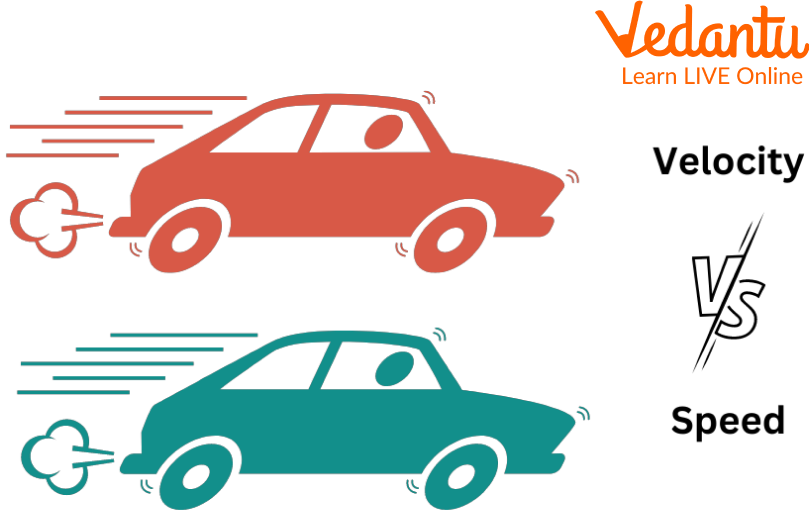




An Overview of Velocity
Velocity is a vector quantity; it requires both the magnitude and direction of the body's motion. The distance a body travels in a given amount of time in a fixed direction is its velocity. If we say we're travelling at 30 miles per hour, that's our speed; if we say we're travelling at 30 miles per hour north, that's our velocity. In this article, we are going to learn about velocity. We will also discuss its calculations and will be able to comprehend this term better with the help of velocity images given in this article.

Speed vs Velocity
What are Velocity and Speed?
Velocity is a measurement of the speed and direction of an object's movement. speed is referred to as a scalar quantity. The distance an object covers in a given amount of time is referred to as its speed. Speed is referred to as a scalar number since it takes into account only the speed of the object. The same units are used to measure both velocity and speed. The metre is the SI unit for both displacement and distance. Time is measured in seconds. The ratio of two, or the metre per second, is the SI unit of speed and velocity.
Different Forms of Velocity
A constant velocity is a speed that moves in a straight line with the same speed and direction.
A velocity that shifts in either direction or with both speed and direction is referred to as changing velocity.
When gravity takes control and causes it to fall toward the earth through the atmosphere, then the object's constant state velocity is referred to as its terminal velocity.
Speed and Its Forms
Speed at any moment is referred to as instantaneous speed.
The overall distance travelled in a given amount of time is known as average speed.
The amount of turns a body makes in one unit of time is known as its rotational speed.
The rate at which a body moves linearly along a circle is called tangential speed.
When any body's speed can be understood in relation to other bodies by comparing it to them is known as relative speed.
Facts About Velocity
Galileo was the first person to try to measure the speed of light.
The speed of light is 186,282 miles per second.
The speed of sound is 343.2 meters per second.
A particular black hole in the galactic center of the NGC 1365 Spiral Galaxy is rotating at a speed of 84 percent of the speed of light.
Summary
Velocity is the displacement covered by a body per unit. Velocity is a vector quantity whereas speed is referred to as a scalar quantity. Velocity and speed have different types. Then later on we learned about the different forms of velocity. Here we have seen, constant velocity, changing velocity and terminal velocity. We have seen different forms of speed. i.e. instantaneous, average, tangential, relative speed. We hope you enjoyed reading this article, in case of any doubts, feel free to ask in the comments.
FAQs on Velocity and Speed
1. How do we use speed and velocity in everyday life?
The applications of velocity are illustrated by the examples below:
Earth's rotation around the Sun,
Moon's orbital motion around the Earth.
The vehicle's speed.
How quickly the train is moving.
The river is moving at a fluctuating speed.
2. Is the speed can be zero?
The speed of an object is a scalar quantity and has only one magnitude, which cannot be negative. It can either be positive or zero.
3. Who defined speed?
Galileo Galilei is credited with measuring speed by considering distance covered and time taken. Galileo defined speed as the distance covered per unit of time.









